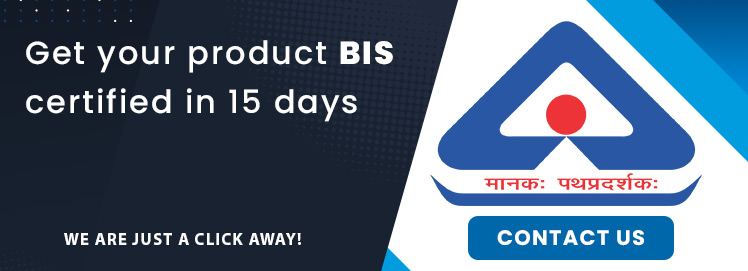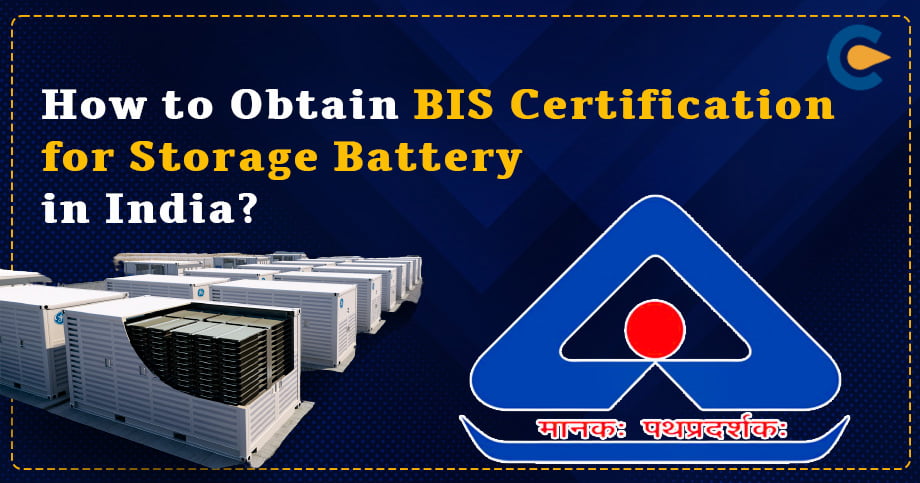BIS registration for low voltage switchgear and high-voltage switchgear forms important parts of electrical systems and power grids. Low-voltage switchgear and control gear are made to safeguard and regulate circuits at lower voltage levels. Switchgear plays a vital role in controlling the flow of electricity, protecting machinery from malfunctions, and facilitating isolation during repair. It can be divided into types based on insulation techniques employed by the switchgear, such as Metal-Enclosed, Gas-Insulated, and Air-Insulated. Each type serves a particular purpose. Devices like contactors and relays are examples of control gear that are used in a variety of industrial, commercial, and residential contexts to regulate tasks like lighting systems and motor start-ups. These systems are made up of a variety of parts, including starters, contactors, relays, and circuit breakers. In order for these items to achieve safety and quality standards, compliance with BIS ISI Registration is required.
How does BIS Registration for Controlgear help adhere to industry standards?
BIS Registration for Low Voltage Switchgear helps in two ways. First, it creates customer trust and reliability in the product and ensures its safety and safe use for both commercial and residential purposes. BIS certification ensures that low-voltage switchgear is manufactured per relevant industry standards and that the materials used are of adequate quality. Secondly, BIS Registration for Low Voltage Switchgear and control gear helps enable the product to be sold in the international market. Voltage Switchgears are important tools used in bigger electrical units and power transmission systems such as transformers, power grids, power sub-stations, residential meters, etc. Since the device is responsible for handling large and intense quantities of enteric current, it is crucial that the device is strong enough to withhold that amount of energy.
Bureau of Indian Standards Approved Standard for Low Voltage Switchgear
BIS Registration for Low Voltage Switchgear is a necessary metric designed to ensure the safety and efficiency of Electric systems and transmission platforms. These BIS Standards are based on the Indian Standard (IS) codes, which provide specifications for various product’s raw materials. For low-voltage switchgear, the IS/IEC 60947 is the ISI Standard. This standard outlines the requirements for the design, performance, material quality, and capacity of the Low Voltage Switchgear device. Compliance with the BIS Registration for Controlgear is an important regulatory compliance requirement for electric devices. Adhering to these standards is essential for water purifier manufacturers to obtain BIS certification and provide consumers with reliable and effective products.
Benefits of BIS Registration for Low Voltage Switchgear
BIS Registration guarantees that a Low meets the Indian standards for quality, safety, and efficiency. Indian Consumers rely on the credibility of a BIS mark and proactively rely on the effectiveness of a BIS-certified water purifier, ensuring peace of mind regarding the water they consume.
Reliability and Trust
BIS registration for Low Voltage Switchgear signifies that the product is safe for use and has adequate capacity to withstand high and low voltage currents. Substandard quality switchgear can implode or, worse, cause harm to people nearby and even causes fires. Hence, it is of utmost importance that the low-voltage switchgear is manufactured at par with BIS ISI Standards.
Signifies regulatory Assent
The process of BIS Registration for Low Voltage Switchgear involves thorough lab testing and quality checks of the device. The device has to go through several quality checks and industry assessments done by government-approved laboratories and testing centres. After undergoing a rigorous quality check routine, the product is considered fit and compliant with the purview of the regulatory requirements.
Promote International Trade
BIS ISI Standards are in line with the international standards of product quality such as the International Organization for Standardization (ISO). BIS Registration for Low Voltage Switchgear, hence streamlines Indian products with international quality, standards and facilitates import/export of the products in and out of India, and promotes international trade in electrical devices.
Documents Required for BIS Registration for Low Voltage Switchgear
In order to apply for BIS Registration for Controlgear, the applicant must submit the necessary documents, licenses, and permits to the regulatory authority, i.e., BIS. The Bureau will then assign an authorized person to examine the documents and provide an assessment report to the Bureau. The Documents required for BIS Registration for Controlgear are –
- Blueprints or design specifications and marking labels of the low-voltage switchgear
- BIS Application From
- Test clearance reports from a Government-approved laboratory
- Details of the Applicant- PAN, AADHR, Adress Proof and Photographs
- Details of the manufacturing process, machinery and raw materials used
- CDF/CCL Form, duly completed and signed
- Details of the manufacturer and manufacturing unit
- Business License and ISO Certificate of the Manufacturer
- Trademark Registration Certificate
Procedure to apply for BIS Registration for Low Voltage Switchgear and Controlgear
The procedure to apply for BIS registration for low voltage switchgear and controlgear is mentioned below:
Step 1- Submission of Application and Documents
For the purpose of BIS Registration for Low Voltage Switchgear, the applicant is required to make an application online on the BIS website by filling out the BIS application form, along with the required documents and permits.
Step 2-Examination and Review of the Product
After submitting the application, the BIS officials carefully examine and verify the document submitted with the application. They scrutinize the technical documents such as test reports, product specifications, labelling and markings, details of the manufacturers, etc., in order to ensure that the details comply with statutory ISI standards prescribed under the Bureau of Indian Standards as well as the Bureau of Electrical Efficiency (BEE).
Step 3- Testing of product samples
After being satisfied with the details of the documents, the officials conduct a survey of the applicant’s manufacturing plant or production unit in order to inspect the production unit, manufacturing process, and machinery used in manufacturing put in place by the applicant.
Step 4- Collection of Samples
The BIS officials receive samples of the device for which the BIS Registration is applied for. Along with all technical specifications, blueprints, and other materials from the manufacturer, and send the same for testing
Step 5- Testing of collected samples
The BIS Officials conduct tests of the samples received. The testing is different for different types of products as per BIS standards and guidelines for product testing. For the purpose of obtaining a Material Test Certificate (MTC), the applicant is required to have the product and its auxiliary devices tested from a BIS-accredited laboratory and include the test reports in the application form.
Step 6- Evaluation of Application
Following the completion of all required testing, the BIS Officials finalize their assessment of the application for the ISI certification for fire extinguishers by examining sample tests, test results, and the applicant’s submitted papers.
Step 7- Approval and grant of certificate
When an application for BIS Certification for a Voltage Switchgear and Controlgear is approved by Bureau officials, and the product satisfies all requirements and standards prescribed by the BIS in accordance with Indian safety standards, the applicant is awarded a BIS Certification to manufacture and sell the devices.
Conclusion
Low Voltage Switchgear and Controlgear are important electrical accessories that are required in all kinds of electrical systems, from power grids to domestic home meters. The device performs a very important function of converting high voltage current to low voltage and safeguarding the circuit from overloading and catching fire or damaging the structure. BIS registration for Low Voltage Switchgear not only ensures compliance with quality standards but also ensures that the product is recognized under international product quality standards as well.
Coprbiz can help you obtain BIS registration for a low-voltage switchgear manufacturing business so that you meet all the statutory requirements applicable to manufacturing electrical devices in India.
Frequently Asked Questions (FAQs)
What is a Low-Voltage Switchgear Controller?
A Low-voltage switchgear Controller is a device containing a combination of circuit breakers fitted at the junction or central point of an electrical distribution system. The purpose of switchgear is to transfer high voltage current to low voltage current so that the high current does not damage the electrical appliance and, at the same time, the load is transferred without any shedding.
What is the ISI mark?
The ISI Mark Certificate signifies that a particular product or device is safe for use and complies with the quality standards as prescribed by the national standards regulatory body.
What is the National Standards Body of India?
The Bureau of Indian Standards (BIS) is the national standard-setting body of India, responsible for grading, assessing and granting registration to the manufacturer of a device or product by conducting a thorough examination.
Is BIS the only body that awards product quality standards in India?
No, there are several other regulatory bodies that are specific to certain products and services. For example, the Bureau of Electricity Efficiency (BEE) is the body that sets efficiency standards for electrical appliances.
What are the documents required for BIS Registration for Low Voltage Switchgear?
The documents that are required for BIS Registration for Controlgear are Blueprints of designs of the device, BSI Application Form, test clearance reports, personal details of the applicant, CDF/CCL Form, business license, and trademark registration certificate of the device.
What is the validity of a BIS License?
BIS Certification remains valid for a period of 2 years from the issuance, after which it has to be renewed.
Is there a penalty for non-compliance with BIS Registration requirements for Low Voltage Switchgear Controllers?
Yes, if anyone violates the provision of the BIS act with respect to the requirement of manufacturing, importing, or selling products without a valid BIS mar, they shall be punishable with imprisonment of up to 2 years or a fine of a minimum Rs. 2,00,000/- or both.
What are the government fees for applying for BIS Registration?
The government fees for BIS Registration are Rs. 1000/- as application fees and additionally rs.7,000/- for physical inspection by BIS officials.
How can Corpbiz help my business obtain a BIS License for low-voltage switchgear and controlgear?
Coprbiz is a leading provider of compliance and industrial licensing and advisory services. Our expert guidance will help you apply for and obtain BSI registration for your low-voltage switchgear and control gear manufacturing business.
Read Our Article: Documents Required For BIS Registration













